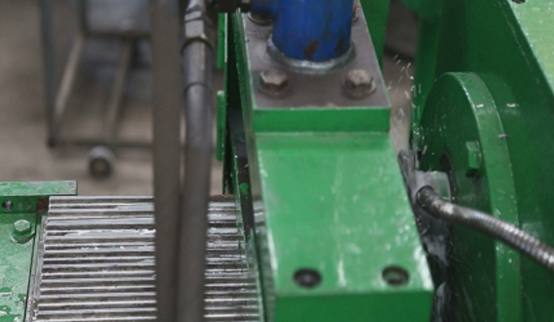 Afrikaans
Afrikaans  Albanian
Albanian  Amharic
Amharic  Arabic
Arabic  Armenian
Armenian  Azerbaijani
Azerbaijani  Basque
Basque  Belarusian
Belarusian  Bengali
Bengali  Bosnian
Bosnian  Bulgarian
Bulgarian  Catalan
Catalan  Cebuano
Cebuano  Corsican
Corsican  Croatian
Croatian  Czech
Czech  Danish
Danish  Dutch
Dutch  English
English  Esperanto
Esperanto  Estonian
Estonian  Finnish
Finnish  French
French  Frisian
Frisian  Galician
Galician  Georgian
Georgian  German
German  Greek
Greek  Gujarati
Gujarati  Haitian Creole
Haitian Creole  hausa
hausa  hawaiian
hawaiian  Hebrew
Hebrew  Hindi
Hindi  Miao
Miao  Hungarian
Hungarian  Icelandic
Icelandic  igbo
igbo  Indonesian
Indonesian  irish
irish  Italian
Italian  Japanese
Japanese  Javanese
Javanese  Kannada
Kannada  kazakh
kazakh  Khmer
Khmer  Rwandese
Rwandese  Korean
Korean  Kurdish
Kurdish  Kyrgyz
Kyrgyz  Lao
Lao  Latin
Latin  Latvian
Latvian  Lithuanian
Lithuanian  Luxembourgish
Luxembourgish  Macedonian
Macedonian  Malgashi
Malgashi  Malay
Malay  Malayalam
Malayalam  Maltese
Maltese  Maori
Maori  Marathi
Marathi  Mongolian
Mongolian  Myanmar
Myanmar  Nepali
Nepali  Norwegian
Norwegian  Norwegian
Norwegian  Occitan
Occitan  Pashto
Pashto  Persian
Persian  Polish
Polish  Portuguese
Portuguese  Punjabi
Punjabi  Romanian
Romanian  Russian
Russian  Samoan
Samoan  Scottish Gaelic
Scottish Gaelic  Serbian
Serbian  Sesotho
Sesotho  Shona
Shona  Sindhi
Sindhi  Sinhala
Sinhala  Slovak
Slovak  Slovenian
Slovenian  Somali
Somali  Spanish
Spanish  Sundanese
Sundanese  Swahili
Swahili  Swedish
Swedish  Tagalog
Tagalog  Tajik
Tajik  Tamil
Tamil  Tatar
Tatar  Telugu
Telugu  Thai
Thai  Turkish
Turkish  Turkmen
Turkmen  Ukrainian
Ukrainian  Urdu
Urdu  Uighur
Uighur  Uzbek
Uzbek  Vietnamese
Vietnamese  Welsh
Welsh  Bantu
Bantu  Yiddish
Yiddish  Yoruba
Yoruba  Zulu
Zulu drive pulley in belt conveyor
The Role of Drive Pulleys in Belt Conveyors
Belt conveyors are essential components in various industries, enabling the efficient transportation of materials across different distances. Central to their operation is the drive pulley, which plays a critical role in the functionality and efficiency of the entire system. Understanding the significance of the drive pulley in a belt conveyor system can enhance the performance and longevity of the equipment.
The Role of Drive Pulleys in Belt Conveyors
One of the key factors in the effectiveness of drive pulleys is their design and construction. Drive pulleys are typically constructed from high-strength materials, such as steel or reinforced composites, to ensure durability. The surface of the pulley is often coated with rubber or textured with grooves to enhance friction between the pulley and the belt. This friction is crucial as it helps maintain the grip on the belt, preventing slippage and ensuring a smooth and efficient operation.
drive pulley in belt conveyor

Drive pulleys are equipped with different types of bearings that facilitate smooth rotation. Proper maintenance of these bearings is essential for the longevity of the drive pulley and the overall conveyor system. Regular lubrication and inspection of bearings can prevent wear and tear, thus minimizing the risk of unexpected failures.
In addition to their mechanical function, drive pulleys also play a role in the overall configuration of the belt conveyor system. They can be designed as either tail pulleys or head pulleys, depending on their position in the conveyor system. Head pulleys, located at the discharge end, are primarily responsible for imparting motion to the belt, while tail pulleys, found at the loading end, serve to support the belt and guide its movement.
Another crucial aspect of drive pulleys is their adaptability to varying load conditions. Depending on the weight and type of material being transported, pulleys may need to be adjusted or replaced to accommodate different operational requirements. This adaptability ensures that the belt conveyor system can operate efficiently under various conditions, thereby improving productivity and reducing downtime.
In conclusion, the drive pulley is a vital component of belt conveyor systems, influencing not only the functionality but also the efficiency and durability of the entire setup. Understanding its role, design, and maintenance can lead to better operational practices and enhanced performance. As industries continue to evolve, the importance of reliable and effective drive pulleys will remain critical in optimizing material handling processes and achieving operational excellence.
-
Revolutionizing Conveyor Reliability with Advanced Rubber Lagging PulleysNewsJul.22,2025
-
Powering Precision and Durability with Expert Manufacturers of Conveyor ComponentsNewsJul.22,2025
-
Optimizing Conveyor Systems with Advanced Conveyor AccessoriesNewsJul.22,2025
-
Maximize Conveyor Efficiency with Quality Conveyor Idler PulleysNewsJul.22,2025
-
Future-Proof Your Conveyor System with High-Performance Polyurethane RollerNewsJul.22,2025
-
Driving Efficiency Forward with Quality Idlers and RollersNewsJul.22,2025





























